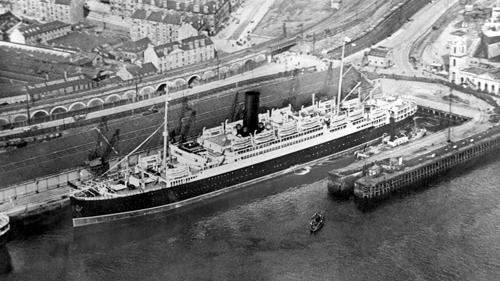Clyde Pilots - Times Past

In November 2021, a Clyde pilot led the Greenpeace vessel, Rainbow Warrior, to its COP26 destination. For many people, it may have been the first time they’d heard of the job. Yet there have been Clyde pilots to safely guide ships and help them navigate the river since 1825.
In their early days, Clyde pilots played a key role in supporting the development of Glasgow trade and industry. The widening and deepening of the Clyde opened up the river to larger ships capable of transporting heavier and greater loads than had previously been possible. Rowboats and horse towage could only carry so much. However, these larger ships were also more difficult to steer safely and were far more likely to run aground or cause a collision. The need for guides was clear. By 1825, a Pilot Board had been established to license these pilots.
Pilots were required to have at least eight years’ experience at sea and most had around fifteen. Up till the turn of the twentieth century, there were two types of pilot: deep-sea and river. Eventually, all pilots were capable of both types of pilotage. Pilotage could either mean taking command of the vessel itself or commanding a tug which the larger vessel followed. Pilots were also responsible for assisting ships in harbour, at trials and for launch. Rates charged for the pilots’ services were based on a ship’s tonnage and for ships over a certain tonnage, it was mandatory to have a pilot.
By 1936, there were forty-six pilots in the service and their busiest time was the weekend when the Clyde was awash with day-trippers. Twenty-five were stationed in Glasgow at the headquarters of the Clyde Navigation Trust in Robertson Street. Their principal duty was to take outgoing vessels down the Clyde. Twenty-one pilots were headquartered in the Watch House in Gourock Pier. Their main duty was to help navigate ships up the river to Glasgow. Near misses could be hair-raising experiences such as when the Clan Graham and the Hisperia narrowly avoided crashing into one another at the mouth of the Kelvin in May 1884.
If a pilot was on board a vessel travelling to Gourock, a ceremony known as “dropping the pilot” would take place once it had safely reached its destination. A ladder was let down the side of the ship to allow the pilot to descend into the pilot-boat Nathaniel Dunlop (named for a former chairman of the Trust) which would take him ashore.
Among our Clyde Navigation Trust collection are the records of the Clyde Pilot Board (later Clyde Pilotage Authority). These include an indexed register of licensed pilots covering 1826 until 2003, minutes which give further details of individual pilots’ careers and applications from those hopeful of becoming pilots themselves.
The occupation of Clyde pilot will be approaching its bicentenary in a couple of years. Despite a reduction in river traffic from the Clyde’s heyday, the pilots’ skill and experience in guiding larger vessels are just as vital and necessary now as they were then.
